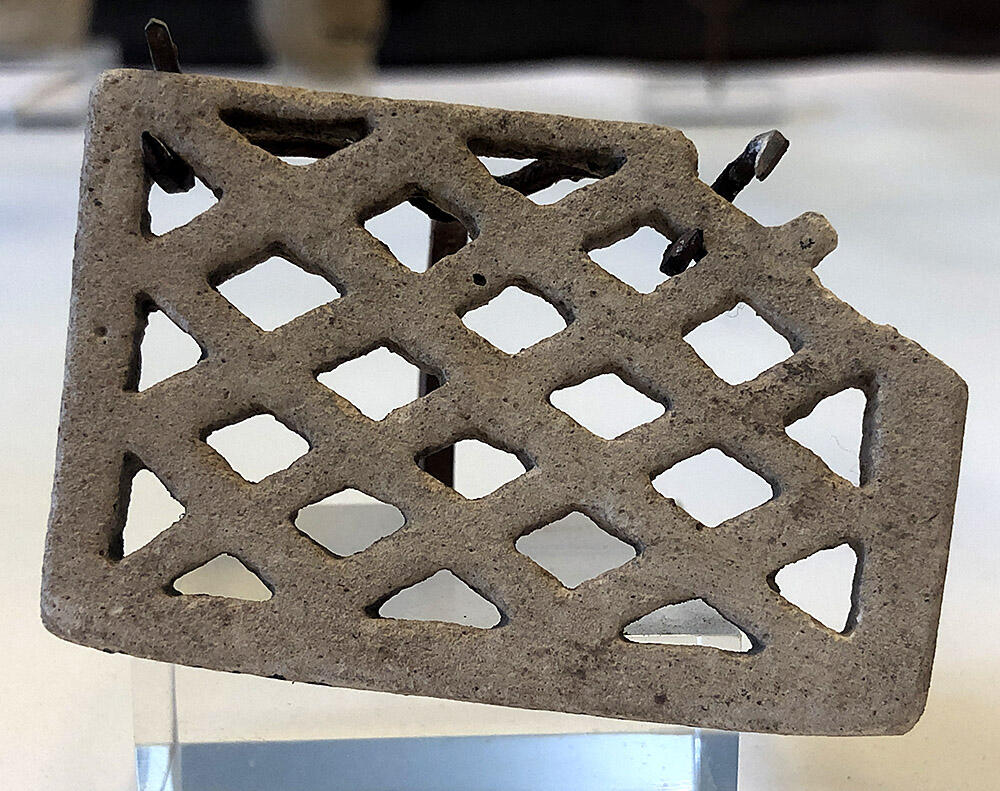Dr. Kenoyer (Ancient Cities, p. 58) writes:
"Windows situated on both the first and second stories had shutters with latticework grills above and below the shutters. This allowed air and light into the room when the shutters were closed and maintained the privacy of the room from outsiders. The shutters and grillwork were probably made of wood, but some may have been made of reeds or matting. A few examples of carved alabaster and marble lattice work have been found at Mohenjo-daro and Harappa. Set into the red-fired brick walls these lattices may have adorned the houses of wealthy merchants or rulers. These early artisans combined the functional features of architecture with patterned beauty, a tradition that anticipated the elegant marble screens of the Mughal period and the more mundane wooden screens on high rise apartment buildings of modern Karachi."
Sir John Marshall wrote (Mohenjo-daro, Vol. 1, 1931, p. 219):
"One of the finds from the former room [13] consisted of fragments of a pierced lattice of alabaster which presumably filled the windows or ventilators at the top of the wall. Perforated screens with geometric patterns have been met with before in Kushan and Gupta buildings. It is now patent that perforated lattices were known and employed in the Indus valley in the prehistoric period."
See also An Indus House #1 and An Indus House #2 an An Indus House #3.

